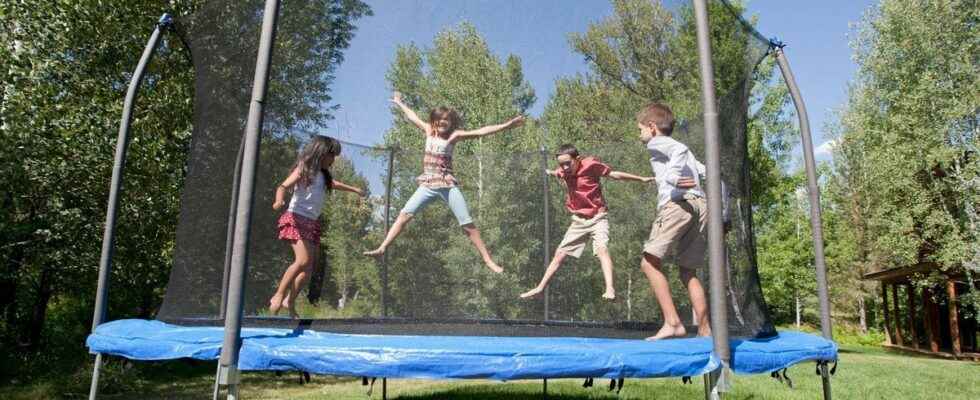Posted ,
Reading 2 mins.
in collaboration with
Dr Gérald Kierzek (Medical Director)
Medical validation:
June 29, 2022
Jumping on a trampoline is not without risk. As proof: in the United Kingdom, half of children’s emergency admissions follow this activity, according to an English study. Where it also appears that to limit the risk of injury, it is better to jump on the trampoline at home than in a park dedicated to this practice.
Concussions, fractures, sprains… Half of the emergency room admissions of young English children under the age of 14 are due to trampoline accidents. A worrying phenomenon, highlighted in a recent study published in the Injury Preventiona very serious newspaper British Medical Journal (BMJ).
In recent years, trampoline parks have experienced a boom in popularity. A popular activity for children and teenagers. Problem, this game is not that fun. It can even cause serious inconvenience.
Greater risks in the centers
A meta-analysis of nearly 1.4 million trampoline injuries, recorded in the United Kingdom, the United States, South Korea, Canada, Singapore, Australia and New Zealand, shows that the activity is particularly dangerous for young people.
In addition to the data recorded in the UK, in Australia, trampoline injuries were responsible for the annual hospitalization of 1,500 children, between 2002 and 2011.
But most importantly, the study found that children who visited trampoline centers were twice as likely to suffer broken bones or sprains as those who used them at home. As for leg injuries, they were three times more frequent.
“The higher tensile strength used in commercial trampoline centers can produce a harder bounce, creating a higher jump that can put more stress on the bones.”explain the authors of this work.
In addition, children would be more reckless in the trampoline park than on a garden trampoline. In particular, they would be more inclined to perform acrobatic tricks such as backflips.
In the end, this activity appears much more dangerous than football or rugby. According to researchers, about half of all childhood and sports injuries are caused by trampolining.
“Domestic accidents should not be neglected: they are often important. To prevent them, you must watch your children, avoid collisions, teach them to control their movements, and above all stop the activity when a child shows signs of fatigue. Indeed, the risk of injury is significant in an exhausted child”recalls Dr. Gérald Kierzek, emergency physician.
The need for stronger supervision
For Professor Guy Eslick, author of the study, “this work demonstrates the need to impose safety rules in public trampoline centers“. At a minimum, indeed.
“At present, safety guidelines are not strictly enforced in trampoline centers, which are present all over the world. Most only require a waiver of liability in the event of injury to the user before admission”, he specifies.
Tips for safe trampolining
To practice trampolining safely, certain safety instructions must be followed:
- Avoid doing acrobatic tricks;
- Choose a trampoline adapted to the size of the children;
- Set up a trampoline on flat ground;
- Constantly monitor trampoline users;
- Lock access to the trampoline once the session is over;
- Have only one child play on the trampoline at a time;
- Opt for a protective net around the trampoline.
